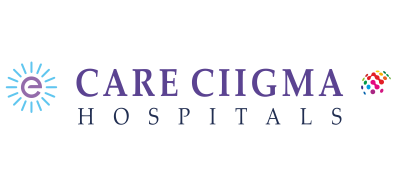Pancreatic Cancer
Pancreatic cancer starts in the cells of the pancreas. The pancreas is a large gland that lies behind your stomach, deep in the upper part of the abdomen.

The pancreas is part of the digestive system. Digestive juices made by the pancreas flow down a tube in the centre of the pancreas called the pancreatic duct. The pancreatic duct joins the common bile duct, which carries bile from the liver. The common bile duct then empties into the duodenum (the first part of the small intestine). The pancreatic juices and bile help digest food in the duodenum after it has left the stomach.
The pancreas is also part of the hormonal system. It makes insulin and other hormones. Hormones made in the pancreas enter the bloodstream and help your body use or store the energy (made from sugar and fat) from the food you eat.
Most pancreatic cancers start in the pancreatic duct. Pancreatic cancer that starts in the cells that make hormones (called islet cell cancer) is rare.
A sign is something that can be observed and recognized by a doctor or healthcare professional (for example, a rash). A symptom is something that only the person experiencing it can feel and know (for example, pain or tiredness).
Pancreatic cancer may not cause any signs or symptoms in its early stages. Symptoms appear once the tumour grows into surrounding tissues and organs. The signs and symptoms of pancreatic cancer depend on where the tumour is located in the pancreas.
The signs and symptoms of pancreatic cancer can also be caused by other health conditions. It is important to have any unusual symptoms checked by a doctor.
Signs and Symptoms of Pancreatic Cancer are:
- Pain in the upper abdomen or upper back
- May come and go or be constant
- Gradually worsens
- Aggravated by lying flat, so may be more severe at night
- Weight loss
- Jaundice
- Itching
- Changes in digestion
- Indigestion
- Nausea
- Vomiting
- Loss of appetite
- Feeling full after a small meal
- Bloating
- Gas
- Changes in bowel habits
- Fatty stools (steatorrhea) – pale-coloured, bulky stools that float in the toilet
- Diarrhea
- Fatigue
- Gastrointestinal bleeding
- Increased blood sugar (diabetes)
- Enlarged spleen
- Swelling of the legs
- Ascites (abnormal buildup of fluid in the abdomen)
- Malaise (a general feeling of discomfort or illness)
- Weakness
- Depression
- Anxiety
- Blood clots in the legs or arms (Trousseau syndrome)
- Enlarged liver and gallbladder (Courvoisier sign)
- Swollen lymph node in the left collarbone area (Virchow node)
Metastases in the lymph nodes near the belly button, or navel (Sister Mary Joseph nodes).
Cancer treatment is given by cancer specialists (oncologists). Some specialize in surgery, some in radiation therapy and others in chemotherapy (drugs). These doctors work with the person with cancer to decide on a treatment plan
Treatment plans are designed to meet the unique needs of each person with cancer. Treatment decisions for pancreatic cancer are based on:
- Stage
- Location of the tumour
- Person’s overall health
Treatment options for Pancreatic Cancer
- Surgery
- Whipple procedure – removal of tumours in the head of the pancreas or the opening of the pancreatic duct
- Distal pancreatectomy – removal of part of the pancreas for early tumours in the tail or body of the pancreas
- Total pancreatectomy – removal of the entire pancreas
- Palliative procedures – to relieve a blockage of the common bile duct or the duodenum caused by a pancreatic tumour
- Stent placement
- Surgical bypass
- Chemotherapy
- Gemcitabine (Gemzar)
- 5-fluorouracil (5-FU)
- Targeted Therapy
- May be given to people with advanced pancreatic cancer
- Erlotinib (Tarceva) most common drug used
- External Beam Radiation Therapy
- May be given alone or in combination with chemotherapy (called chemoradiation).
- Follow-up after treatment is finished
- It is important to have regular follow-up visits, especially in the first 2 years after treatment

